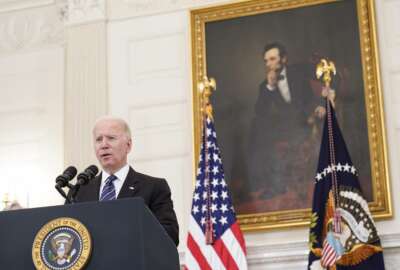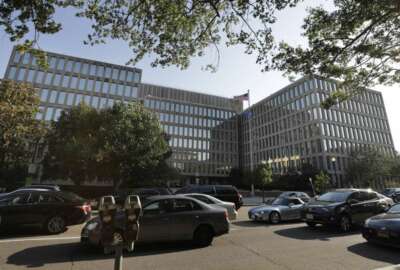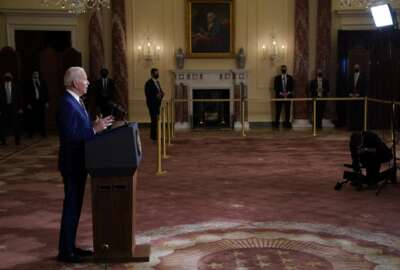Biden’s diversity and inclusion EO highlights struggling federal internship program
The Biden administration's recent diversity and inclusion executive order directed agencies to reduce their reliance on unpaid internships. But former executives...
It’s all hands on deck for federal agencies implementing President Joe Biden’s new executive order on diversity and inclusion, which the president signed during a recent Pride Month event.
Federal employee groups and others see the new order as comprehensive and broad, one where everyone from the White House Domestic Policy Council to the National Institute of Standards and Technology has a role in advancing diversity, equity, inclusion and accessibility in government.
The order calls for both a governmentwide diversity, equity, inclusion and accessibility strategic plan with quarterly goals and individual agency plans. It directs agencies to ramp up demographic data collection, expand diversity and inclusion training and hire or elevate chief diversity officers to promote and advance their organizations’ strategies.
The Partnership for Public Service called the order “an important advancement in the federal government’s growing focus” on Diversity, Equity, Inclusion, Accessibility (DEIA) initiatives.
“The whole of government approach is really striking to me, in terms of how the administration is really calling upon various agencies to collaborate to fulfill this necessity,” said Marcus Hill, a 14-year member of the Senior Executive Service and vice chairman on the Senior Executives Association’s board.
But importantly for some former federal executives and advocates, the order also addresses a portion of the federal hiring system that’s especially ripe for improvements.
The diversity and inclusion EO calls on agencies to reduce their reliance on unpaid internships, with the Office of Personnel Management and Office of Management and Budget preparing guidance directing agencies to increase the availability of paid internships, fellowships and apprenticeships.
The agencies will “ensure that internships, fellowships and apprenticeships serve as a supplement to, and not a substitute for, the competitive hiring process — and that they develop individuals’ talent, knowledge and skills for careers in government service,” the EO reads.
It’s here where former executives and advocates say the government has an especially long way to go, particularly in creating a federal internship program that truly serves as a pipeline for diverse talent into the executive branch.
Data shows the government as a whole is offering far fewer paid internships through the Pathways Program today than it was a decade ago. Agencies offered 60,000 paid internships in 2010, compared to just 4,000 in 2020, according to the Biden administration’s most recent budget request.
Naturally, the federal government is hiring fewer interns into full-time positions. Agencies hired 35,000 interns back in 2010, compared with just 4,000 in 2018, an 89% drop, according to the Trump administration’s 2020 budget request.
Every agency has fewer employees under the age of 30 today than they did 10 years ago, the Biden administration has said.
“There has not been a serious promotion of these programs that were just indigenous in the [19]80s, that attracted young talent into the government and retained that talent because those programs got them engaged in the workforce,” said Hill, who started his government career at age 17 as a paid intern for Navy Submarine Base Kings Bay in Georgia.
Hill spent his holiday and summer breaks working as a GS-2 for the Navy, who also paid for part of his tuition and textbook expenses.
“It was through a cooperative education intern-type program that quite frankly targeted people like me, people of color, people [who were] impoverished, who would not necessarily have had the opportunity or the skills sets to be able to apply for some of those positions,” he said.
Those kind of internship and apprenticeship programs were “in vogue” in 1980s, Hill said, but are less prevalent today, particularly for young students just graduating from high school.
“There are not a lot of organizations paying for those types of internships and those cooperative education tours,” said Hill, who retired in January from the Federal Law Enforcement Training Center after 37 years in public service. He was a 14-year member of the Senior Executive Service. “We took a lot of volunteers into our law enforcement training internship program. We put them up and housed them on center, but we didn’t necessarily pay them a salary.”
It’s unclear how many unpaid interns the federal government employs. The Office of Personnel Management doesn’t collect that information from agencies, OPM confirmed to Federal News Network.
A search on Tuesday for internship positions on USAJobs.gov shows unpaid opportunities at a few agencies. Of the 9,903 jobs open to the public, a total of 370 were open to students and recent graduates, according to USAJobs.
The total could be misleading for undergraduates, however, since at least 60 of the jobs apparently open to students and recent graduates are medical positions at the Department of Veterans Affairs or Health and Human Services.
Of those, a few agencies, including the Education, Justice and Treasury Departments, as well as the Development Finance Corporation, have positions open for fall “student volunteers,” which are unpaid.
The State Department’s Virtual Student Federal Service Internship also advertises unpaid opportunities, though the program is less traditional than others. Students submit an application on USAJobs and receive offers to work on specific projects; they’re generally not taking on a full or part-time schedule.
Another search for the word “internship” returns 889 job listings, with 475 of them open to the public. Again, many of the posts might mislead undergraduate or graduate students searching for an internship. Dozens of posts simply mention prior internship experience as a prerequisite for applying to the position; the job itself isn’t an internship.
The search also brings up several paid opportunities under the Pathways Program, an internship authority that has confused some agencies over the years. OPM is working on regulatory fixes for the program, the administration said in its most recent budget request.
While Biden’s diversity and inclusion executive order calls on agencies to reduce the practice of hiring unpaid interns, it doesn’t eliminate them altogether.
“It would be nice to get to the point where agencies can no longer have unpaid interns,” said Carlos Vera, executive director of Pay Our Interns, a non-profit organization that advocates for paid internships in the United States. “But it’s a big step, especially coming from the nation’s largest employer.”
Vera, who turned down an internship with the Education Department a few years ago because it was unpaid, said he wished the executive order would have put a definitive end to unpaid opportunities in the federal government.
Doing so, he acknowledged, requires appropriated funding from Congress. Vera’s organization wrote to Biden back in March, urging the administration to include funds for paid internships at the White House and every executive branch agency in the 2022 budget request.
There are a few signs, however, that Congress is paying attention.
House appropriators have asked OPM to conduct a feasibility study to increase the number of interns working in the federal government, according to the 2022 report from the financial services and general government subcommittee. Subcommittee members will also ask OPM to offer up public data on participation in the Pathways Program for the last seven years.
“The Pathways programs has the potential to be a main pipeline for people to enter government,” a recent report from the House Appropriations Subcommittee on Financial Services and General Government reads. “To begin revitalizing the Pathways programs, OPM needs to better measure and determine the effectiveness of each program as a pipeline of new and diverse talent.”
In addition, House appropriators included $4.5 million in its 2022 budget proposal to pay interns at the White House and other Executive Offices of the President.
The same committee proposed $10 million for paid internships at the State Department next year. House appropriators also directed State to convert all internships into paid opportunities within the next three years.
For Vera, the inclusion of dedicated funding for a paid internship program at the State Department is encouraging. As long as Congress finalizes dedicated funding for paid federal internship programs, the diversity and inclusion order, in a sense, has some staying power, no matter the administration in charge.
“This EO changes the course,” he said. “Now it’s up to us and others to see it through.”
Copyright © 2025 Federal News Network. All rights reserved. This website is not intended for users located within the European Economic Area.
Nicole Ogrysko is a reporter for Federal News Network focusing on the federal workforce and federal pay and benefits.
Follow @nogryskoWFED






